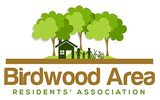History
|
An excerpt from pages xiii-xiv of Cambridge Street Names: Their Origins and Associations:
"Cambridge streets reflect the dominance of the University. There are clusters of names... where each college holds or held land, often acquired in the nineteenth century Inclosures... Peterhouse: LANGHAM, GISBORNE, HOLBROOKE, PERNE, [BROOKS], BIRDWOOD, CHALMERS, GRAY, WARKWORTH, [BEAUMONT], AINSWORTH." From page 127:
"In a Peterhouse cluster occurs the name of William Riddell BIRDWOOD (1865-1951), Field Marshal. He was in command of the Anzac Corps in the Gallipoli landing of 1915 and in France til 1918. In 1925 he was Commander-in-Chief of the Indian army. From 1930 to 1938 he was Master of Peterhouse." From pages 124-125:
"Benjamin BRITTEN (Baron Britten) (1913-76) conducted his arrangement of Gay's The Beggar's Opera in Cambridge in 1948 and thereafter often visited Cambridge." |
More information: Memories:
|
And from pages 88-89:
"Builders and developers have a better chance of influencing the naming of streets than many others. Rattee and Kett have provided stone for colleges... The names are given to streets near their premises... [ANCASTER] is another well-known quarry, whose stone was used for St John's Chapel. (The Duchester of Ancaster was Thomas PANTON's daughter)."
"Builders and developers have a better chance of influencing the naming of streets than many others. Rattee and Kett have provided stone for colleges... The names are given to streets near their premises... [ANCASTER] is another well-known quarry, whose stone was used for St John's Chapel. (The Duchester of Ancaster was Thomas PANTON's daughter)."
An excerpt from British History Online: Cherry Hinton.
"In 1945 St. Thomas's Hospital sold off the land to the east of the Peterhouse holdings: initially 100 prefabricated houses were built there, but they were replaced in the 1950s by more substantial semi-detached council houses around St. Thomas's Square, and along Walpole Road. They were set back from the road, with wide tree-lined verges. Some of those houses though built of breeze blocks have since been given brick fronts. Overall the west of the parish came to be occupied by middle-class, including professional people, while a group of council estates to the east was intended for less prosperous people."
"In 1945 St. Thomas's Hospital sold off the land to the east of the Peterhouse holdings: initially 100 prefabricated houses were built there, but they were replaced in the 1950s by more substantial semi-detached council houses around St. Thomas's Square, and along Walpole Road. They were set back from the road, with wide tree-lined verges. Some of those houses though built of breeze blocks have since been given brick fronts. Overall the west of the parish came to be occupied by middle-class, including professional people, while a group of council estates to the east was intended for less prosperous people."
The National Library of Scotland has some fun maps, including the Spy Viewer, a sample you can see below. You can view different periods of maps overlaying openstreetmap.com. Or you can look at whole maps using Find by Place.

